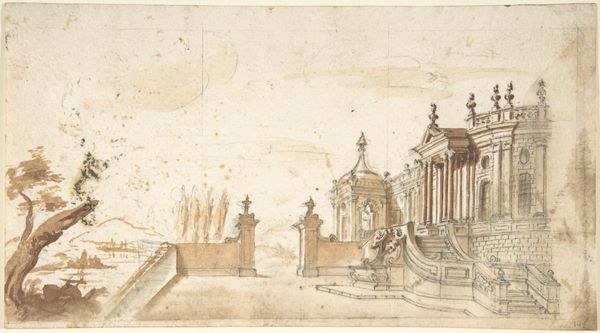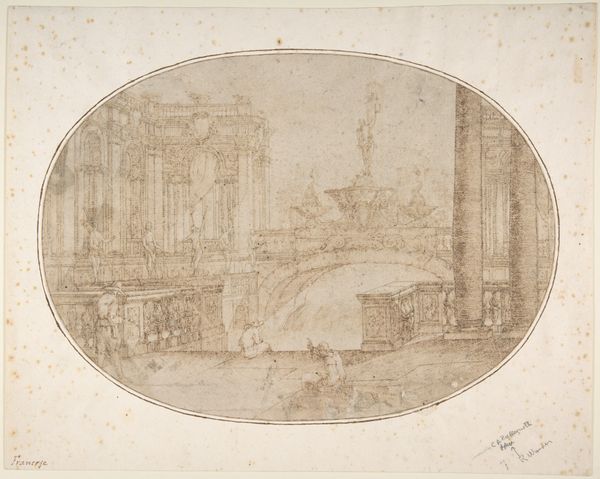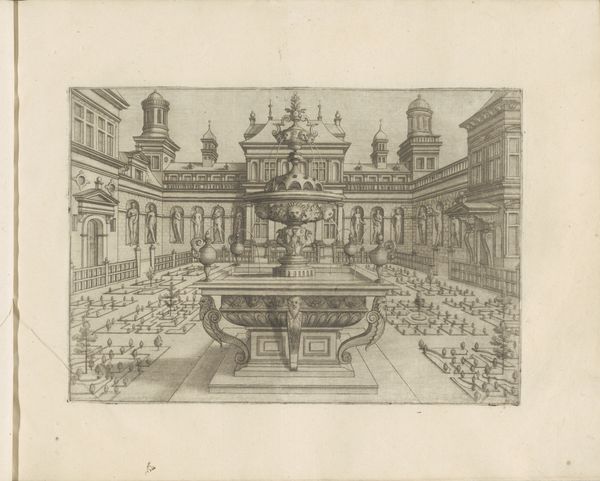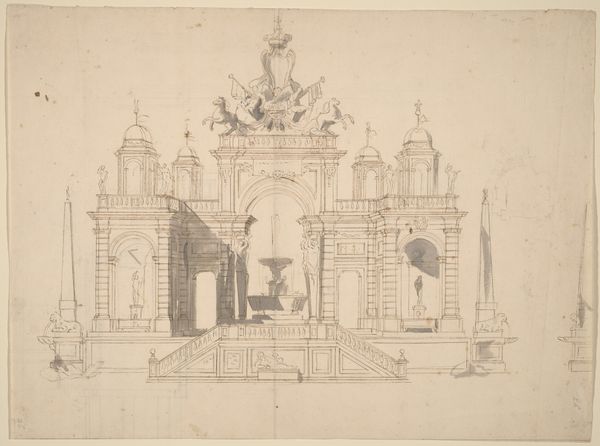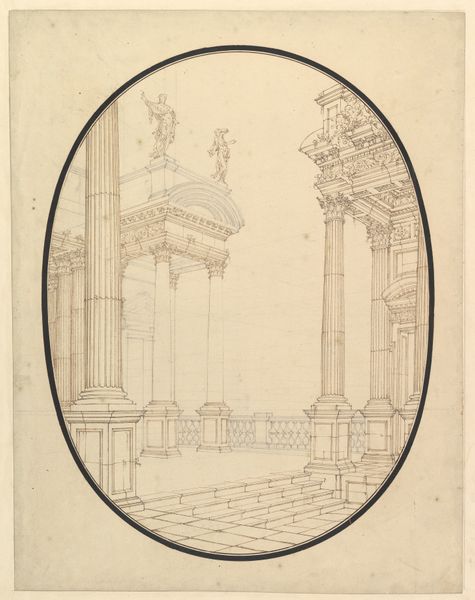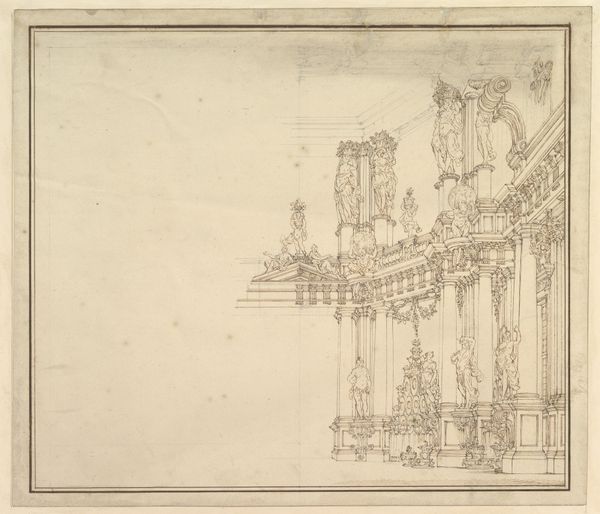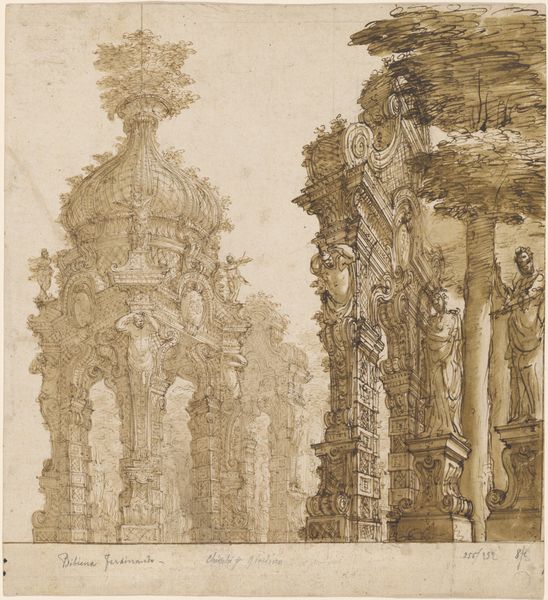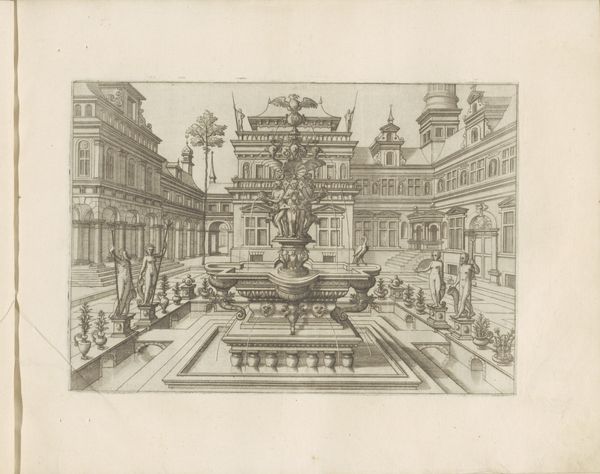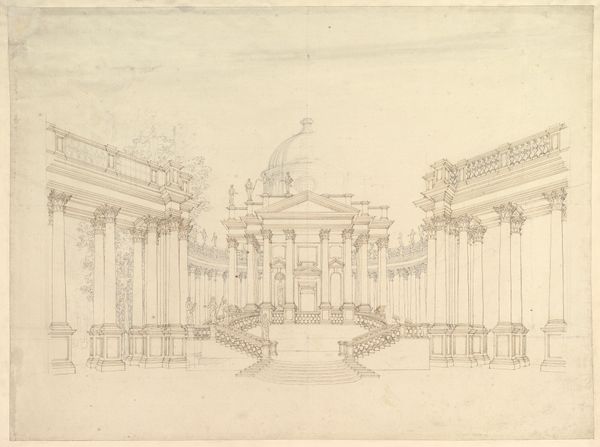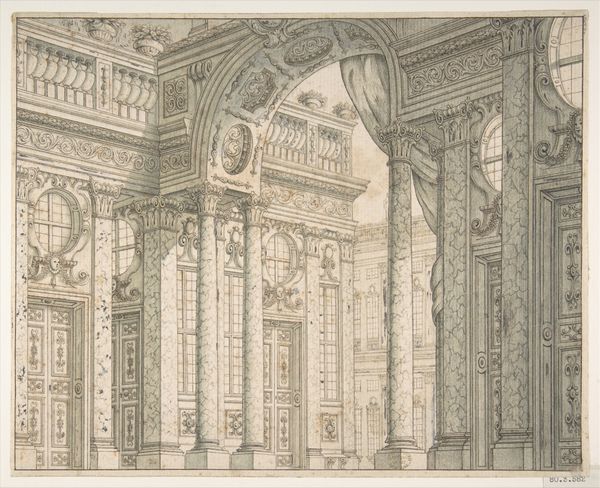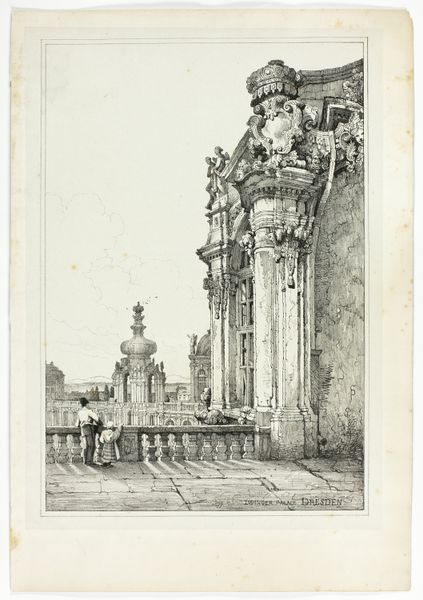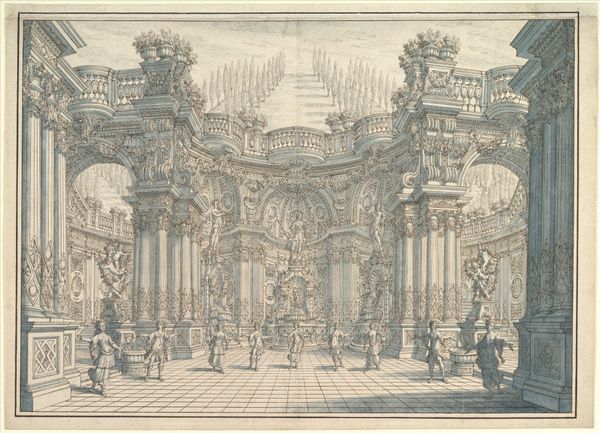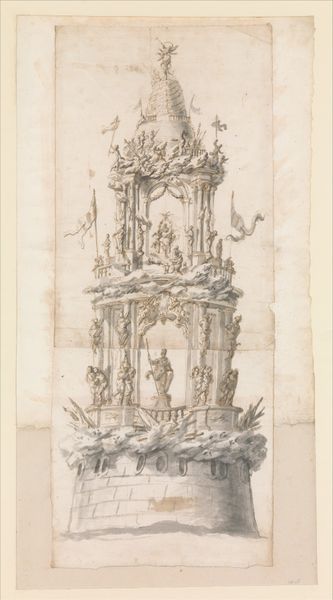
Design for a Stage Set: Semi-Circular Architectural Ruins, Fountains, and an Obelisk 1657 - 1743
0:00
0:00
drawing, print
#
drawing
#
allegory
#
baroque
# print
#
form
#
line
#
cityscape
#
history-painting
Dimensions: sheet: 9 5/16 x 14 13/16 in. (23.6 x 37.6 cm)
Copyright: Public Domain
Curator: This drawing is attributed to Ferdinando Galli Bibiena, active in the late 17th and early 18th centuries, and presents a "Design for a Stage Set: Semi-Circular Architectural Ruins, Fountains, and an Obelisk." It's currently held at the Metropolitan Museum of Art. Editor: My first thought? An overwhelming sense of theatricality. The exaggerated perspective and intricate detailing evoke a world built entirely for spectacle. Curator: Absolutely. Note how Bibiena employs the baroque style to manipulate depth and scale. The careful lines emphasize the monumental ruins and the geometry in this semi-circular configuration to give a sense of grandeur. Editor: Grandeur at what cost, though? I can't help but think of the laborers who quarried, hauled, and carved the stone implied in this image. Stage sets, after all, aren't built by magic; it took real, material labor, likely anonymous. Curator: An important point. The drawing itself, however, presents a rarefied vision. Its value lies in how its lines and forms work in concert to imply a lost civic history. See how the Obelisk provides a central axis and reflects upon time and narrative space in design. Editor: Perhaps a history built on the backs of others. I see this design not just as aesthetic invention, but as a record – however indirect – of resource extraction, urban change and the manipulation of materials. How did these landscapes then function to distract from that social and materials context, one wonders? Curator: Such questions prompt richer reflection on Bibiena's construction. His interplay of architectural elements represents both reality and theatrical illusion through formal vocabulary and compositional prowess. Editor: In conclusion, considering the social conditions behind this type of theatrical work is key to a broader perspective that contextualizes labor and artistic vision. Curator: It makes me question the cultural values in a theatre scene that so heavily depended on these kinds of productions.
Comments
No comments
Be the first to comment and join the conversation on the ultimate creative platform.
